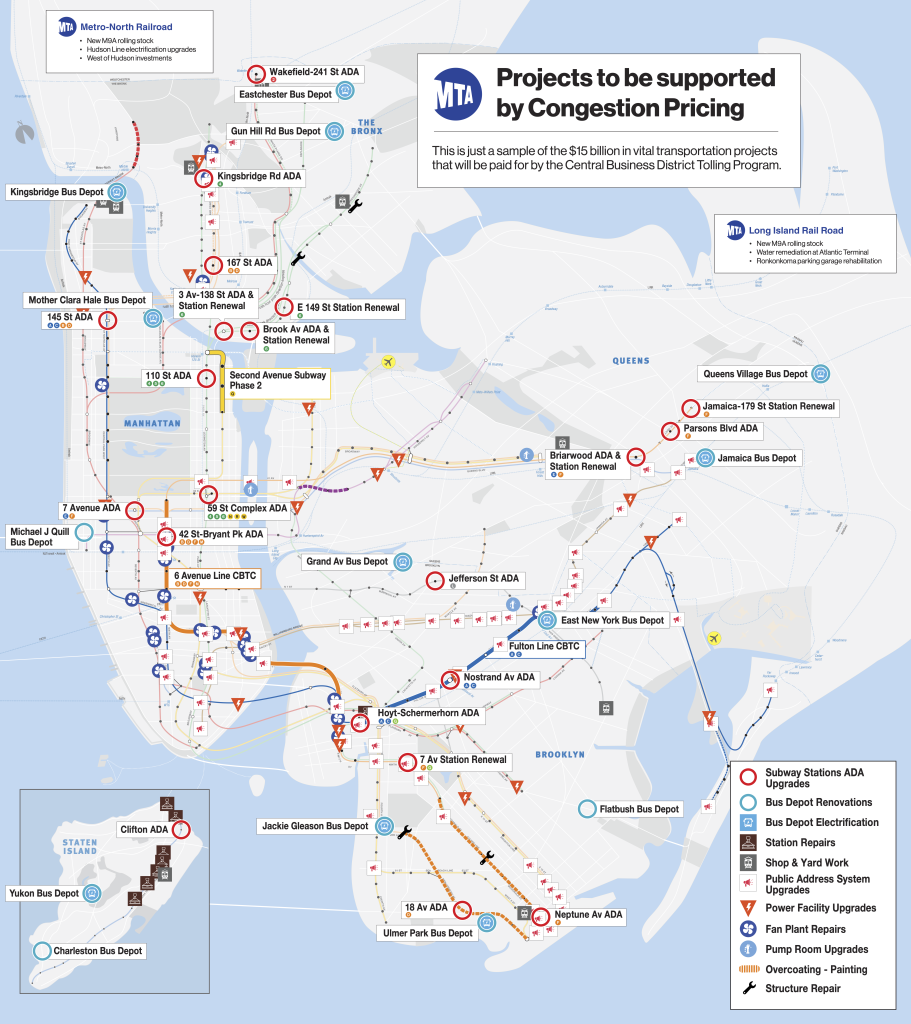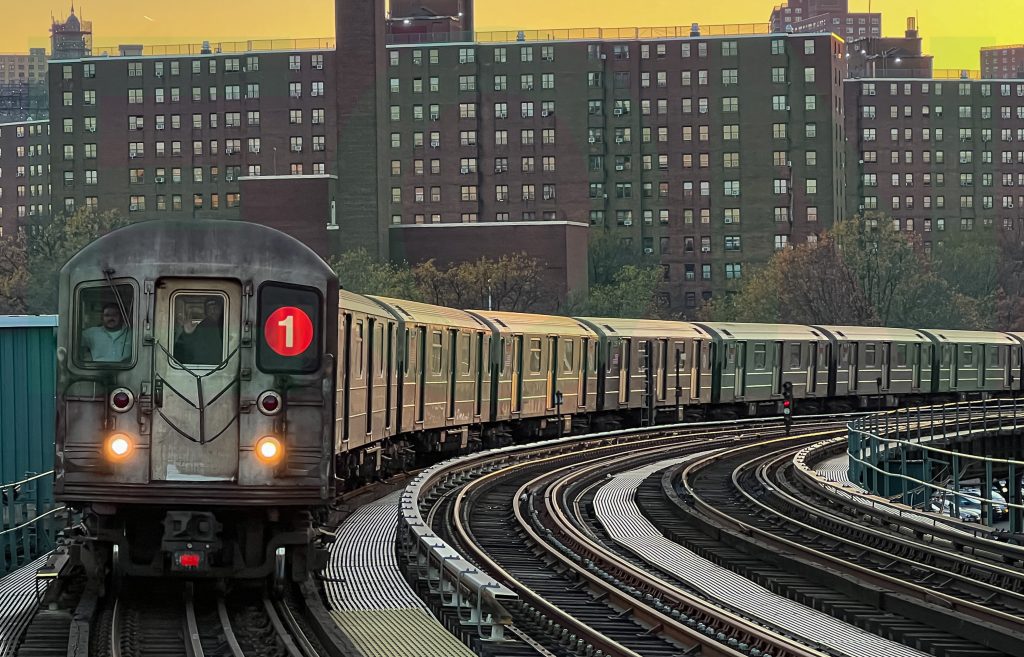This past Wednesday, Governor Kathy Hochul directed the Metropolitan Transportation Authority (MTA) to pause New York’s congestion pricing program indefinitely. The plan, which was scheduled to go into effect on June 30th, would have charged drivers a toll when they entered Lower Manhattan (south of 61st Street). The fee would have varied by automobile type, with passenger vehicles paying $15 per entry (maximum of one charge per day). While those who drive daily into Lower Manhattan may be celebrating Gov. Hochul’s decision, her choice to suspend the program is absolutely ridiculous.
Before her reversal, Gov. Hochul touted the plan as a solution to two major issues: traffic inside New York City and a lack of capital funding for the MTA. New York City, if you can believe it, has some of the worst traffic in the United States and consistently tops reports as the most congested area in North America. Additionally, while being one of the best transit systems in the United States, the MTA has been critically underfunded and routinely experiences budget crises.
The idea behind New York’s congestion pricing program was to incentivize commuters to take other types of transportation into Lower Manhattan. Those who continue to drive would be charged a fee, and the program’s revenue would be directed towards the MTA for capital expansions. This approach would likely have persuaded some commuters to find other transportation options as a preliminary report estimated that the number of cars entering Lower Manhattan would drop by 17%, equal to 153,000 fewer automobiles. This would reduce traffic and carbon emissions while promoting safer streets and cleaner air within the congestion zone. Furthermore, the revenue gained from the congestion pricing would have been substantial, as the program was expected to generate $1 billion per year for the MTA, allowing it to invest upwards of $15 billion in capital expansions over time. These investments would improve service and extend more affordable transportation options to residents. The decision to suspend congestion pricing indefinitely becomes inexcusable when considering what has already been invested in the program and who specifically would have benefitted from it.
For starters, the MTA has a contract worth $507 million with Transcore, a private company tasked with building and administering the congestion pricing program. Cameras and toll scanners have already been installed in anticipation of the program’s launch. If congestion pricing is never implemented in Lower Manhattan, then that money will have been completely wasted. Moreover, the MTA’s planned capital expansions would have largely benefitted low-income and disabled New Yorkers.
Given the high cost of purchasing and maintaining an automobile, especially in NYC, many low-income residents see the MTA as their best option, given the system’s immense size and small cost. The MTA was planning to dedicate the revenue from the congesting pricing program towards several projects, including extending service to East Harlem, modernizing signaling to reduce delays and replacing aging infrastructure like railcars and escalators. Improving the MTA’s service benefits all transit users but helps low-income NYC residents the most as they often solely rely on public transportation. Additionally, the MTA is continuing to make efforts to provide greater accessibility to disabled commuters. The MTA also planned to use congestion pricing funds to add more ramps and elevators to stations, allowing individuals in wheelchairs to access more MTA subway stations.
Map of Planned MTA Projects Using Congestion Pricing Funds

Not only were low-income and disabled commuters in line to benefit from MTA improvements, but they would also have been largely protected by any congestion pricing fees. Only 2% of outer-borough commuters in poverty drive into Lower Manhattan for work, and these 5,000 drivers would have qualified for a discount. Furthermore, disabled drivers would have been fully exempt from any charges. In reality, New York’s congestion pricing program would have charged the many higher-earning commuters who drive into Lower Manhattan for work, making the program highly progressive.
It is clear that New York’s congestion pricing program would have reduced traffic, enhanced the MTA’s service and benefited the most vulnerable New Yorkers. Rather than allow this to happen, Gov. Hochul decided to suspend a program that the MTA had already invested half a billion dollars into just 25 days before implementation. Without congestion pricing, NYC will likely remain the most traffic-ridden city in the United States, wasting commuters’ time and hampering their productivity.
Gov. Hochul attempted to persuade the state legislature to fill in the MTA’s $1 billion gap with general funds or a city business tax that would be more regressive and affect far more people than congestion pricing. However, the state legislature ended its session without approving a plan to fund the public transportation system. MTA officials have already stated that projects dependent on congesting pricing funds would “likely need to be deprioritized to protect and preserve the basic operation and functionality of this 100+ year old system.” This means hundreds of MTA’s much-needed capital improvements will either be delayed or canceled.
Gov. Hochul’s decision to suspend congestion pricing is completely indefensible. Her reasoning likely extends beyond the claims she made in her press conference, as there has been intense pressure from wealthy constituents, and she has received large contributions from lobbying groups that are staunchly opposed to the program. Nonetheless, Gov. Hochul’s decision is not only a betrayal of her stated goals of revitalizing New York City but also deprives her constituents of a more effective and accessible public transportation system, all in the name of sparing mainly higher earners who commute by car into Lower Manhattan a relatively small fee. Luckily, state lawmakers have publicly stated that they will sue over Gov. Hochul’s decision as the bill that created the congestion pricing program was passed and signed into law. If these lawsuits are successful, congestion pricing would be reinstated. Not only would congestion pricing benefit America’s largest city, but it would also serve as an example to other U.S. metropolitan areas of how to effectively reduce traffic and adequately fund public transportation systems.

